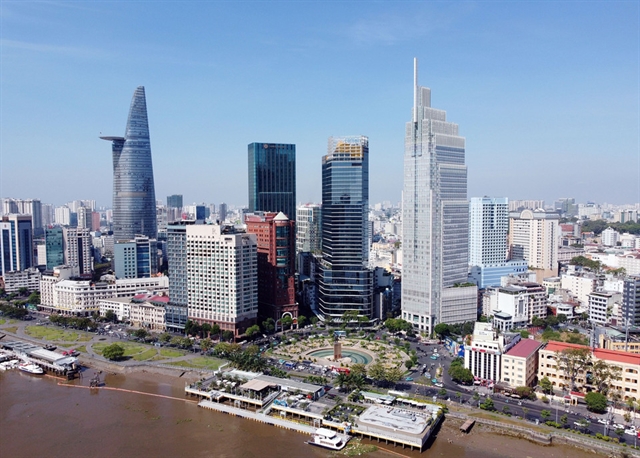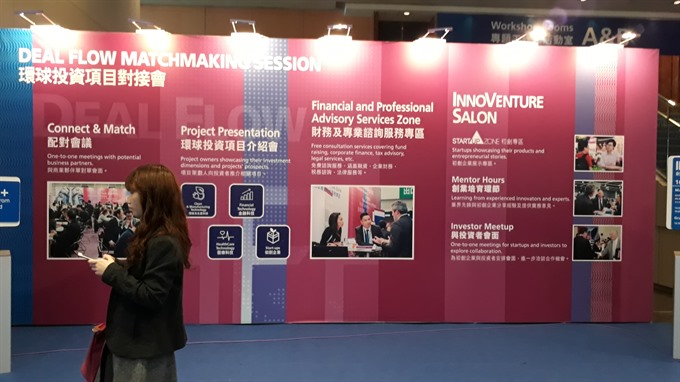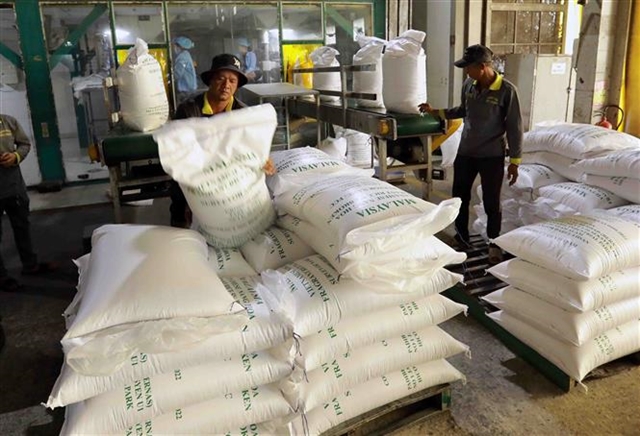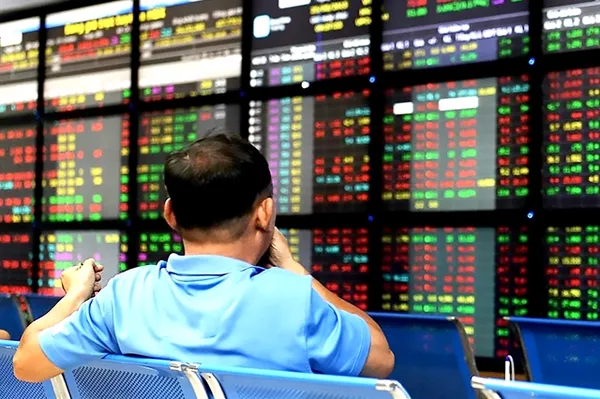 Economy
Economy

Hong Kong is expected to continue to be a key springboard for investment in the mainland and as a main port in China’s Belt and Road Initiative.
 |
| An attendee in front of AFF Deal Flow Matchmaking Session backdrop in Hong Kong on January 16. An AFF 2018 activity, the session helps connect potential business partners and start-ups from around the world. — VNS Photo Mai Huong |
By Mai Huong
HONG KONG – Hong Kong is expected to continue to be a key springboard for investment in the mainland and as a main port in China’s Belt and Road Initiative.
Addressing the Asian Financial Forum 2018 in Hong Kong yesterday, Norman T. L. Chan, Hong Kong Monetary Authority’s chief executive, said Hong Kong remained China’s largest destination for foreign direct investment (FDI), accounting for 50-60 per cent of the national total.
In terms of capital exports, in which China is playing a growing role with US$200 billion invested overseas in 2016, making up 15 per cent of the global total, Hong Kong is now dealing with 50-60 per cent of China’s outward direct investment.
China’s insistence on political and financial stability has discounted efforts to widen Hong Kong’s “one country, two systems” system, but a dedicated infrastructure and great connectivity are giving the former colony the upper hand in cementing its status as an international financial centre.
Hong Kong stock market is connected to two mainland stock exchanges – Shanghai (in 2014) and Shenzen (in 2016). Together with Bond Connect in 2017. The synergy among China’s main markets now covers stocks, mutual trust funds, bonds, and potentially derivative products.(Bond Connect is a new mutual market access scheme that allows investors from China and overseas to trade in each other’s bond markets through connection between related mainland and Hong Kong financial institutions.)
The enclave has the world’s largest offshore pool of renminbi business, processing 70 per cent of global offshore payment transactions. Hong Kong’s stock market is also continually among the top five global IPO listing markets, partly thanks to growing demand for IPOs from mainland companies.
“Only Hong Kong, whose service industry makes up 70 per cent of its GDP, can connect the world well and connect to China,” said Min Zhu, former deputy managing director of the International Monetary Fund.
The “Belt and Road Initiative”, initiated by Chinese President Xi Jinping in 2013, is an ambitious strategy to promote economic co-operation along land and sea corridors spanning 65 countries.
Although there are sounds about promoting Chinese interests through soft power, observers have said this initiative will likely create enormous business opportunities throughout Asia, Europe and Africa.
Gabriel Wong, finance leader at PwC China and Hong Kong, described the initiative as an “unprecedented era in business”. He talked about massive demand for infrastructure estimated at $1.7 trillion a year through to 2030.
“I have talked to several countries and find that reform is underway in most dimensions in Belt and Road countries,” Gabriel said, listing structural changes in capital and infrastructure markets, land and tax reform and public-private partnership framework.
China is wrestling with slowing demand overseas and over-capacity at home, which is turning it towards overseas expansion. The Chinese government expects its trade with countries along Belt and Road routes to exceed US$2.5 trillion a year within the next decade.
As the initiative begins to roll out, Hong Kong is in an advantageous position to act as a super connector for trade and regional infrastructure.
Paul Chan, financial secretary of the Hong Kong Special Admimistrative Region Government, believes Hong Kong has the expertise, international connections and deep liquidity to serve as the fundraising and financial mamagement hub for different kinds of mega projects with a variety of financing avenues from IPOs and loan syndication to bond issuance.
Added to Belt and Road Initiative, the Great Bay Area Development covering Hong Kong, Macao and nine cities in Guangdong with collective GDP at $1.36 trillion is also providing a new window of opportunities for Hong Kong to reinforce its major role in connecting mainland China with other economies. – VNS




